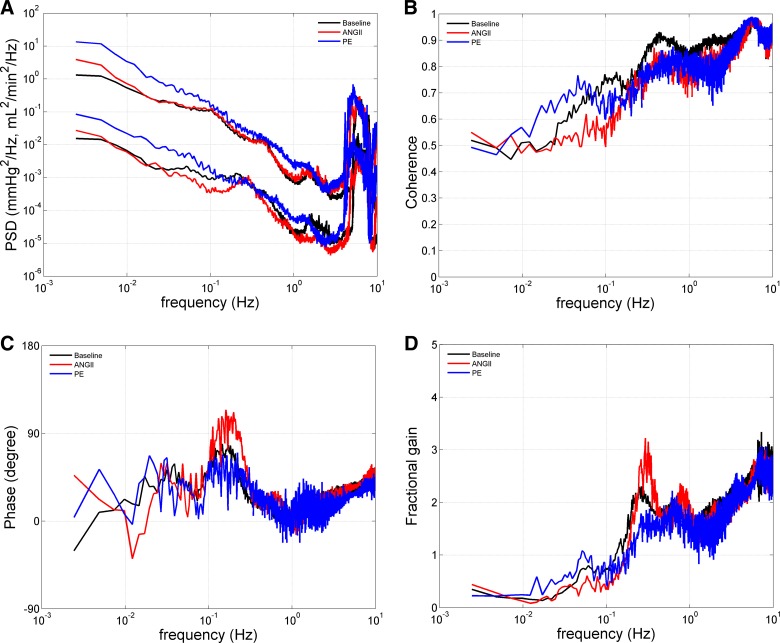Fig. 5.
Effects of ANG II (n = 11) and PE (n = 8) on transfer functions in conscious chronically instrumented rats. Because no significant differences were observed with respect to the transfer functions obtained during baseline recordings, these data have been averaged between groups for presentation clarity. A: BP and RBF power spectral density (PSD) at baseline and during ANG II (125 ng·kg−1·min−1) and PE (50 mg·kg−1·day−1) in units of (mmHg)2/Hz for BP and (ml/min)2/Hz for RBF. Directionally opposite effects consistent with an augmentation and attenuation of the renal myogenic mechanism during ANG II and PE administration, respectively, were observed in the coherence at 0.05–0.1 Hz (B), phase peak (C), and signature resonance peak of the myogenic mechanism (D). Conversely, PE administration was associated with an increase in the signature resonance peak of the TGF mechanism, while a decrease was observed during ANG II (D). See text and Table 2 for statistical analysis.

